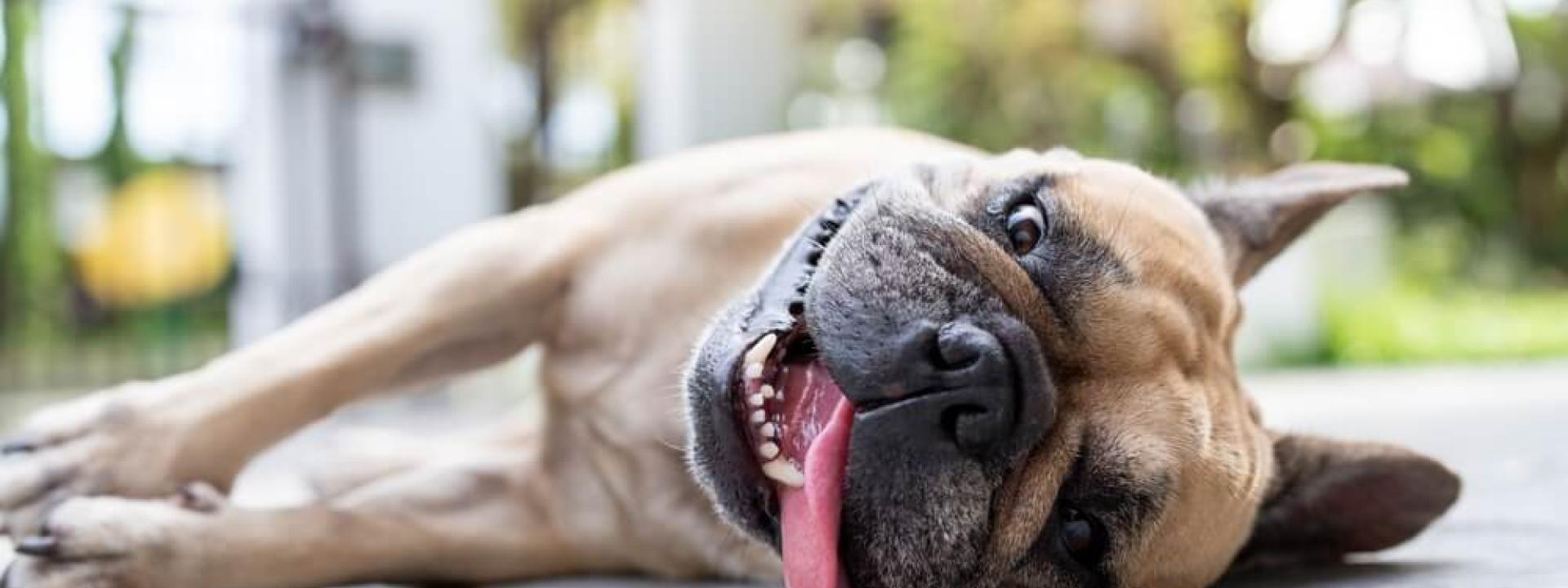
Summer is an exciting time of the year—school’s out, the sun is shining, and we can eat as much ice cream as we want! Unfortunately, the hot temperatures can be less exciting for our pets, who can dangerously overheat. Our Tennessee Avenue Animal Hospital team wants you and your four-legged friend to enjoy the summer, and we explain how heat affects your pet and steps you can take to keep them safe as temperatures increase.
Heatstroke in pets explained
Heatstroke occurs in pets exposed to overly warm or hot conditions who cannot lower their body temperature to normal, which for cats and dogs is between 101 and 102.5 degrees.
Dogs and cats have only a few sweat glands in their paws, so they rely on other cooling methods. When dogs pant, they rapidly breathe out air that evaporates the water on their tongues, and breathe in cooler air. Similarly, when cats lick their coats, the saliva on their fur evaporates and cools them down.
Heatstroke signs in pets
Common heatstroke signs in pets include:
- Excessive panting or difficulty breathing
- Excessive thirst
- Drooling
- Weakness and lethargy
- Vomiting or diarrhea
- Disorientation
- Collapsing
All pets are susceptible to heatstroke, but certain pets are at increased risk. Higher risk pets include puppies, senior pets, overweight pets, brachycephalic breeds (i.e. pugs, boxers, bulldogs), and those affected by a health problem, such as heart disease or an endocrine disorder.
Steps to take when your pet overheats
If your pet shows signs of overheating, you must act immediately. The longer they overheat, the higher their risk of serious harm, including long-term organ damage. Heatstroke first aid includes the following steps:
- Move your pet to a cool, well-ventilated area.
- If possible, take their temperature to monitor their progress and let your veterinarian know how high their temperature reached.
- Offer water to your pet, but don’t try to force them to drink.
- Pour cool water over your pet to help start the cooling process.
- Avoid ice and cold water because this can lead to shock if your pet’s temperature rapidly falls.
- Contact our Tennessee Avenue Animal Hospital team. Even if your pet seems to return to normal, they still require veterinary care to ensure the heat didn’t cause internal issues.
Know how to prevent heatstroke in pets

Tips to help prevent heatstroke include:
- Provide water — Hydration is important to keep your pet healthy. Always ensure your pet has access to fresh, clean water. Provide several water sources throughout your house, and clean and refresh the bowls daily. In addition, pack water and a portable water bowl when on outings so you can easily offer your pet water when they start to pant.
- Limit exercise — Avoid strenuous exercise on hot, humid days, and take your pet for a walk during the early morning or evening hours when temperatures are cooler.
- Take breaks — When on outings, take frequent breaks in the shade to allow your pet to cool down.
- Never leave your pet in a parked car — Temperatures inside parked vehicles can quickly escalate to dangerous levels. You may think that parking in the shade or leaving the windows cracked will keep temperatures at a safe level, but these measures aren’t enough to protect your pet. Leave your pet at home if they can’t accompany you on your errands.
- Consider cooling products — Consider using cooling mats, vests, or bandanas designed to help pets stay cool.
Heatstroke is dangerous for pets, but you can still enjoy fun in the sun with your furry friends. If you notice heatstroke signs in your pet, have any questions about their health, or it’s time to schedule their annual wellness exam, do not hesitate to contact Tennessee Avenue Animal Hospital.

